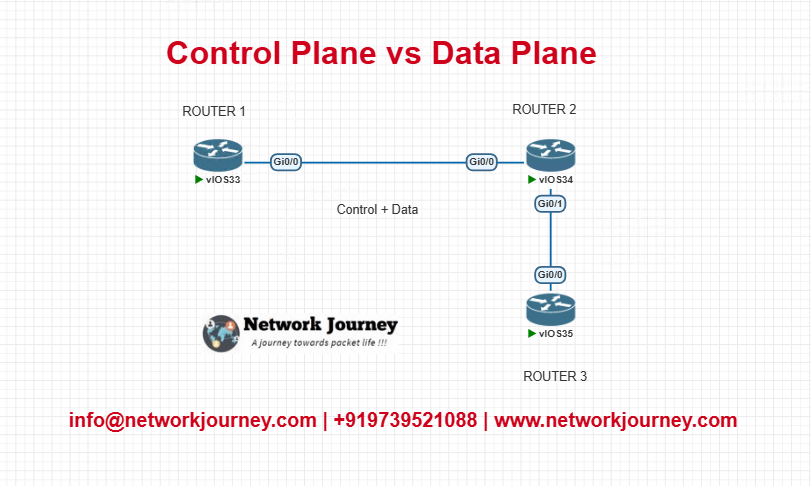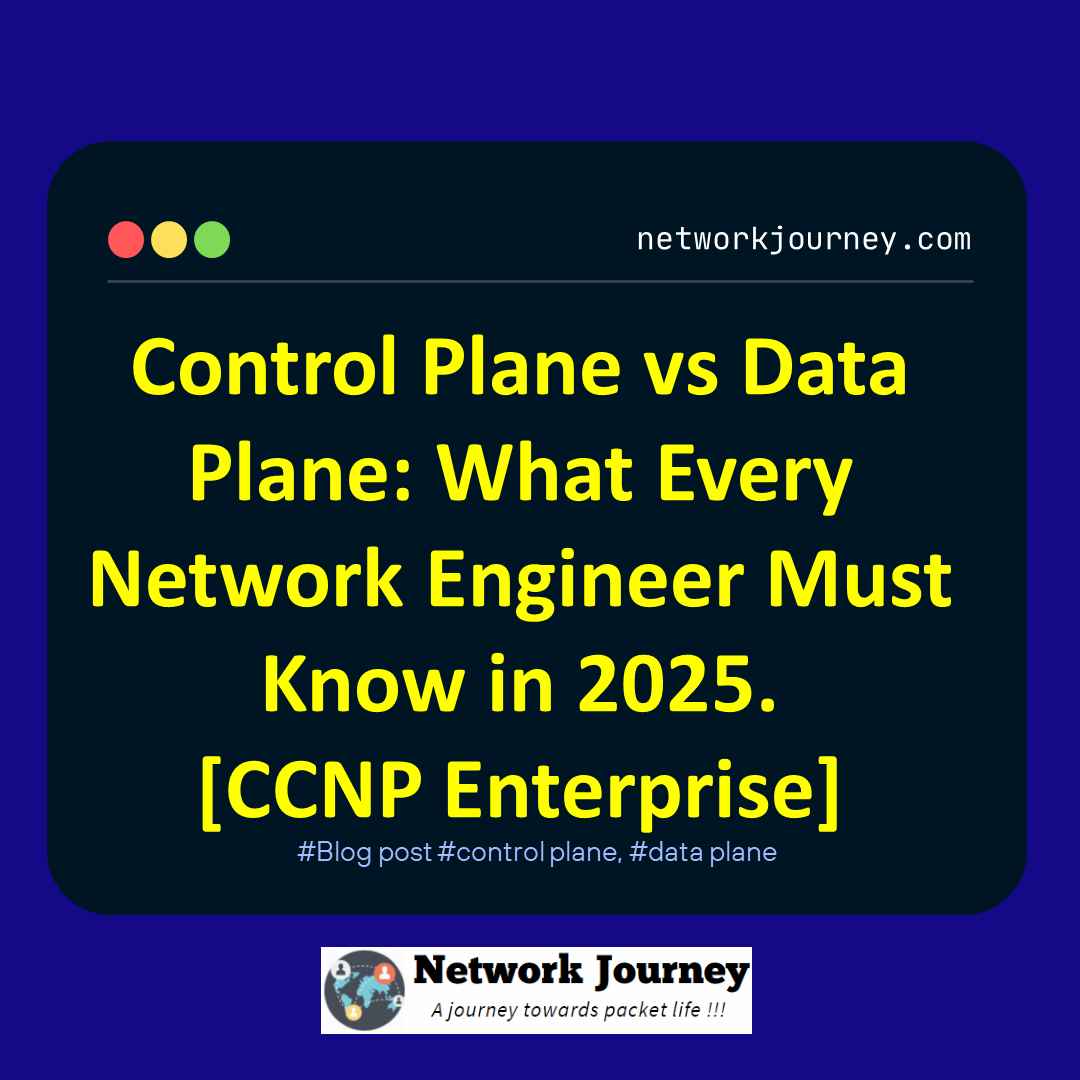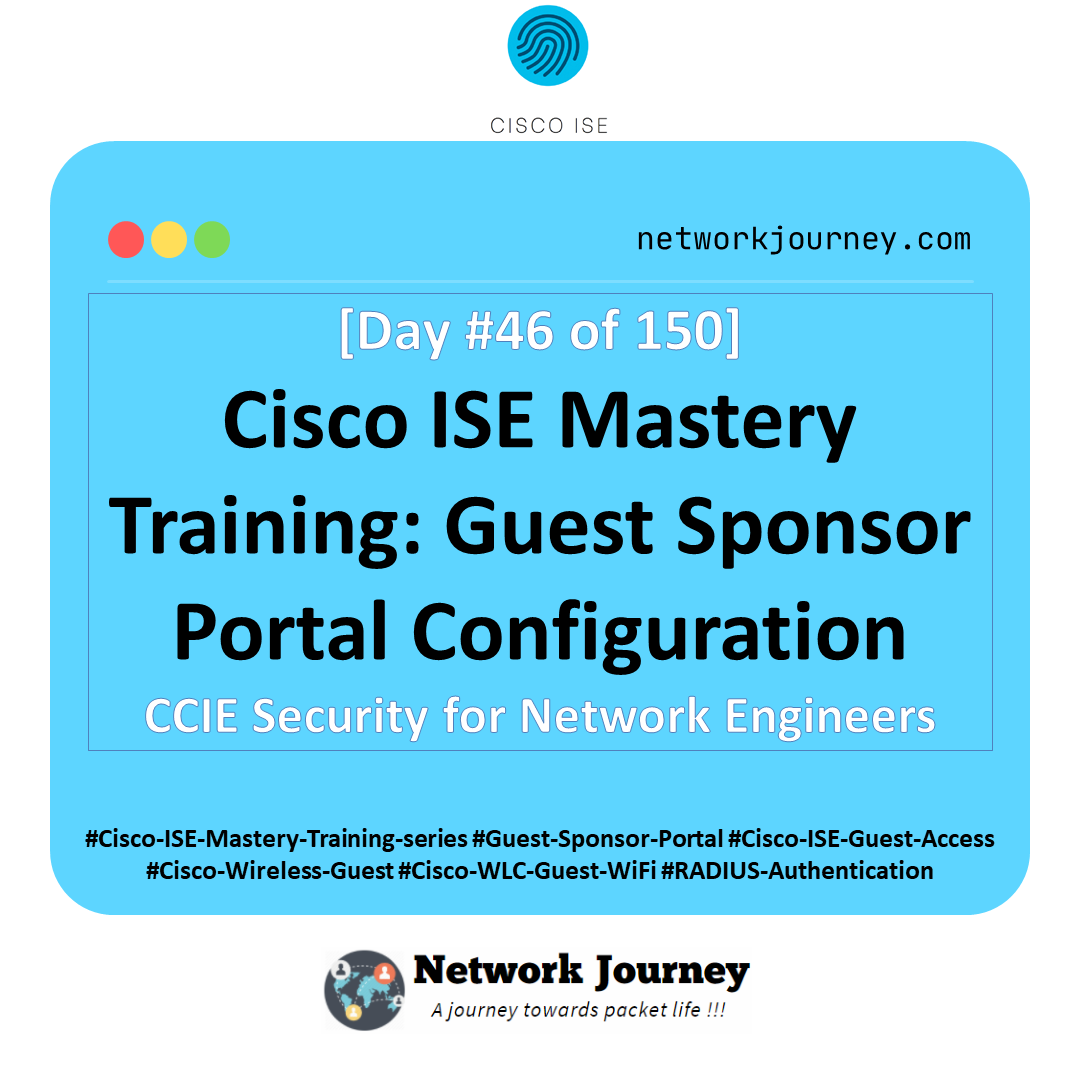Control Plane vs Data Plane: What Every Network Engineer Must Know in 2025 [CCNP Enterprise]
Today we’re talking about one of the most foundational yet misunderstood topics in networking—Control Plane vs Data Plane. I can’t tell you how often I’ve seen even experienced engineers mix up the two, especially when jumping into technologies like SD-WAN, SDN, and Cisco DNA Center.
So, let’s cut through the noise and understand these concepts with real-world analogies, clear CLI commands, lab examples, and troubleshooting tips. Whether you’re preparing for CCNP Enterprise or designing an enterprise network in 2025, this guide is for you.
Table of Contents
Theory in Brief
What is the Control Plane?
The Control Plane is responsible for making decisions. It tells the network how to forward traffic. It includes all routing and switching logic—things like calculating routes with OSPF or exchanging BGP updates.
Think of it like Google Maps planning your trip—it decides the best path from A to B, but it doesn’t drive the car.
- Deals with routing protocols, ARP, STP, LSA updates, etc.
- Runs on the CPU of the device
- In software-defined networks, it may be centralized (like in SDN)
What is the Data Plane?
The Data Plane is the actual path traffic takes. It moves packets based on the decisions made by the Control Plane.
Using the same analogy, if the Control Plane is Google Maps, the Data Plane is your car following the route.
- Also called the Forwarding Plane
- Executes packet forwarding and filtering (ACLs, NAT, etc.)
- Operates at high speeds, often using hardware (ASICs)
Where Does the Management Plane Fit In?
Just to clear up the trio:
- Control Plane = Brains
- Data Plane = Muscles
- Management Plane = Remote Control Interface (SSH, SNMP, REST API)
Real-Life Analogy
| Role in a Delivery System | Networking Equivalent |
|---|---|
| Dispatcher planning routes | Control Plane (OSPF, EIGRP) |
| Delivery van transporting goods | Data Plane (actual packet forwarding) |
| Supervisor checking status | Management Plane (SNMP, SSH) |
Summary: Control Plane vs Data Plane
| Feature | Control Plane | Data Plane |
|---|---|---|
| Function | Decision-making (routes, policies) | Packet forwarding |
| Operates On | CPU | Hardware (ASIC/NPU) |
| Key Components | Routing tables, topology database | CEF table, NAT, QoS |
| Speed | Slower (logical processing) | Faster (hardware forwarding) |
| Example Protocols | OSPF, BGP, EIGRP | IP, TCP, ACLs, QoS |
| Security Impact | Affects topology and reachability | Affects packet filtering and delivery |
Essential CLI Commands
| Purpose | Command | Description |
|---|---|---|
| Show routing table (control) | show ip route | Displays routes from the control plane |
| Show ARP table | show ip arp | Control plane – resolution of MAC |
| Show forwarding table (CEF) | show ip cef | Data plane – lookup used for forwarding |
| Check packet processing stats | show interfaces | Packet/byte counters (data plane) |
| Display BGP/OSPF info | show ip bgp / show ip ospf | Routing protocol state (control) |
| Access control checks | show access-lists | ACLs in data plane |
Real-World Use Case: SD-WAN Traffic Flow
| Component | Role in Control Plane | Role in Data Plane |
|---|---|---|
| vSmart Controller | Handles policy distribution | None (only control plane) |
| vEdge Router | Receives control info, builds table | Forwards packets per that table |
| MPLS Transport | Not involved in decision-making | Physically carries the data traffic |
| Internet Backup | Secondary underlay; data plane route | Used for app-aware routing failover |
EVE-NG LAB: Control & Data Plane Demonstration
LAB TOPOLOGY

- R1, R2, and R3 are Cisco IOSv routers
- OSPF is used for Control Plane
- ICMP and HTTP traffic is generated to demonstrate Data Plane
CLI CONFIGURATION EXAMPLE
OSPF Control Plane Config
router ospf 1 network 192.168.1.0 0.0.0.255 area 0
Data Plane Test (Ping/Traceroute)
ping 192.168.3.1 traceroute 192.168.3.1
Show CEF Forwarding Table
show ip cef 192.168.3.1
Troubleshooting Tips
| Issue | Likely Plane | Fix Command |
|---|---|---|
| No route to destination | Control Plane | show ip route, debug ospf events |
| Packets dropped with ACL | Data Plane | show access-lists, show ip interface |
| High CPU with route flapping | Control Plane | show processes cpu, show ip bgp summary |
| Interface receiving but not forwarding | Data Plane | show interfaces counters, debug ip packet |
| ICMP works, but app fails | Data Plane (QoS/ACL) | Check show policy-map interface |
FAQs: Control Plane vs Data Plane
1. What is the Control Plane in networking?
Answer:
The Control Plane is responsible for making decisions about where traffic should be sent. It handles routing protocols, neighbor relationships, building routing tables, and network topology discovery. Think of it as the “brain” of the network—calculating the best path based on logic and algorithms.
Examples include OSPF, EIGRP, BGP processes and ARP table building.
2. What is the Data Plane in networking?
Answer:
The Data Plane, also called the Forwarding Plane, is responsible for the actual movement of packets from one interface to another based on the decisions made by the Control Plane. It uses information from the Forwarding Information Base (FIB) and MAC tables to forward packets at high speed.
It’s like the “muscle” of the network—executing the instructions.
3. How do Control Plane and Data Plane interact with each other?
Answer:
The Control Plane builds and updates the routing and switching tables using protocols and network intelligence. Once these tables are built, the Data Plane uses them to forward traffic efficiently. The two planes work hand-in-hand—control makes decisions, and data executes them.
4. What are some real-world examples of Control Plane functions?
Answer:
Some common Control Plane operations include:
- Establishing OSPF neighbor adjacencies
- Exchanging BGP route updates
- Creating spanning tree topology
- Handling ARP requests and replies
- Running ICMP for diagnostics (e.g., ping, traceroute)
These functions help routers and switches learn about the network.
5. What are some real-world examples of Data Plane activities?
Answer:
Examples of Data Plane activities:
- Forwarding a packet based on the routing table (FIB)
- Switching frames using the MAC address table
- Applying access control lists (ACLs)
- NAT translations
- QoS marking and queuing
These processes are done in real-time and at line rate.
6. Why is separating the Control Plane and Data Plane beneficial?
Answer:
Separation offers several advantages:
- Scalability: Control logic can be centralized (e.g., in SDN)
- Security: Control plane is protected from data plane floods
- Performance: Data Plane can be optimized for speed
- Flexibility: Central controllers can dynamically change routing
Technologies like SDN and Cisco ACI leverage this separation.
7. How does SDN (Software Defined Networking) redefine Control and Data Planes?
Answer:
In SDN, the Control Plane is centralized in a controller (like Cisco APIC), while Data Plane remains on network devices. This allows programmability, dynamic traffic steering, and better automation. The controller uses APIs to push policies, while the switches just forward traffic based on those policies.
8. What CLI commands help monitor the Control Plane?
Answer:
Common Control Plane commands include:
show ip route– View routing table built by the Control Planeshow ip protocols– Inspect active routing protocolsdebug ip ospf/debug bgp events– Monitor control messagesshow spanning-tree– See STP topology infoshow cdp neighbors– Control plane discovery
These help troubleshoot logic and decision-making processes.
9. What CLI commands monitor the Data Plane?
Answer:
Useful Data Plane commands:
show mac address-table– Switching behaviorshow ip cef– Cisco Express Forwarding (CEF) forwarding tableshow access-lists– Data plane filteringshow interfaces counters– Traffic statsping,traceroute– End-to-end connectivity check
They help verify actual forwarding and performance metrics.
10. What are some common issues caused by problems in each plane?
Answer:
| Plane | Example Problem | Result |
|---|---|---|
| Control | OSPF neighbor down | Routing table incomplete |
| Control | BGP route filtering misconfigured | Reachability issues |
| Data | ACL blocking traffic | Application not reachable |
| Data | MAC table aging out | Flooding & performance drops |
Control Plane issues affect decisions and learning, while Data Plane issues impact actual traffic movement.
YouTube Link
Watch the Complete CCNP Enterprise: Control Plane vs Data Plane: What Every Network Engineer Must Know in 2025 Lab Demo & Explanation on our channel:
Final Note
Understanding how to differentiate and implement Control Plane vs Data Plane: What Every Network Engineer Must Know in 2025 is critical for anyone pursuing CCNP Enterprise (ENCOR) certification or working in enterprise network roles. Use this guide in your practice labs, real-world projects, and interviews to show a solid grasp of architectural planning and CLI-level configuration skills.
If you found this article helpful and want to take your skills to the next level, I invite you to join my Instructor-Led Weekend Batch for:
CCNP Enterprise to CCIE Enterprise – Covering ENCOR, ENARSI, SD-WAN, and more!
Get hands-on labs, real-world projects, and industry-grade training that strengthens your Routing & Switching foundations while preparing you for advanced certifications and job roles.
Email: info@networkjourney.com
WhatsApp / Call: +91 97395 21088
Upskill now and future-proof your networking career!



![[Day 14] Cisco ISE Mastery Training: Setting Up a Test Switch for Authentication](https://networkjourney.com/wp-content/uploads/2025/08/Day-14-Cisco-ISE-Mastery-Training-Setting-Up-a-Test-Switch-for-Authentication.png)